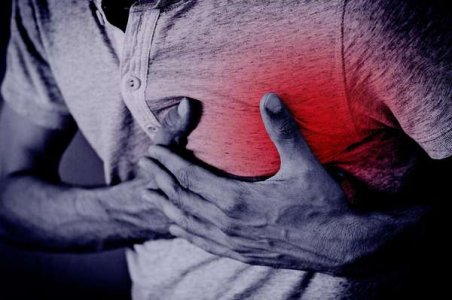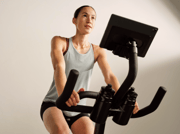Save your life in 5 minutes? Try this simple at-home test a leading cardiologist swears by!
- Replies 0
In the golden years of our lives, we often find ourselves more attuned to the whispers of our health. A creak in the knee, a twinge in the back—our bodies have their ways of talking. But when it comes to the heart, sometimes the signals are not as loud, yet they're far more critical.
That's why a leading heart doctor's revelation about a 5-minute at-home test to spot a potentially deadly cardiac condition has caught our attention. Here’s why you need to learn it too!
Dr. Jeremy London, a US-based cardiothoracic surgeon with a quarter-century of experience and a significant following on social media, has shared a simple method that could be a lifesaver.
Coronary heart disease, a silent stalker and one of America's biggest killers, develops when the heart's blood supply is compromised, often due to fatty deposits called plaque clogging the arteries.
This condition can dramatically increase the risk of heart attacks and strokes, making early detection crucial.
Dr. London's at-home test is straightforward and requires no special equipment—just a few minutes and a keen sense of self-awareness.

Here's how you can conduct this potentially life-saving test:
1. Engage in an activity that raises your heart rate, such as brisk walking, climbing stairs, or even vigorous housework, for a few minutes.
2. Pay close attention to any symptoms that arise during this exertion. Do you feel chest tightness, pain, shortness of breath, or pain radiating to your arm?
3. Stop the activity and rest. Observe whether the symptoms persist or cease.
If you experience the aforementioned symptoms during activity, but they stop once you rest, consider this a red flag.
According to Dr. London, this could indicate a blockage in the artery at the front of the heart.
As your heart rate increases during exercise, the blockage may cause the area below to become “blood starved,” leading to these symptoms.
When you rest, your heart rate slows, stabilizing blood flow and alleviating the discomfort.
While some heart issues present clear warning signs, such as severe chest pain, others can be more subtle and easily dismissed.
Angina, a chest pain that occurs when the heart doesn't get enough oxygen, can range from a sensation similar to indigestion to severe pain or tightness that spreads to other parts of the body.
The National Health Service (NHS) notes that angina can be triggered by physical activity or stress and usually fades quickly.
However, not everyone with coronary heart disease experiences chest pain, so it's essential to be vigilant for other symptoms like breathlessness, feeling faint, and nausea.
Coronary heart disease claims about 375,476 lives each year in the US alone—around 805,000 Americans have a heart attack.
Experts urge individuals to take chest pain seriously and consult a doctor if they experience intermittent pain.
In cases of sudden, persistent chest discomfort, especially if it spreads or is accompanied by other distressing symptoms, calling emergency services is imperative.
Source: @drjeremylondon / Tiktok.
Prevention and early intervention are key in managing coronary heart disease.
Lifestyle changes such as adopting a healthier diet, increasing physical activity, and quitting smoking can make a significant difference.
Medications like statins or blood thinners may also be prescribed, and in more severe cases, surgery may be necessary to open up or bypass blocked arteries.

Do you have any tips for maintaining heart health? Share your thoughts and advice in the comments below!
That's why a leading heart doctor's revelation about a 5-minute at-home test to spot a potentially deadly cardiac condition has caught our attention. Here’s why you need to learn it too!
Dr. Jeremy London, a US-based cardiothoracic surgeon with a quarter-century of experience and a significant following on social media, has shared a simple method that could be a lifesaver.
Coronary heart disease, a silent stalker and one of America's biggest killers, develops when the heart's blood supply is compromised, often due to fatty deposits called plaque clogging the arteries.
This condition can dramatically increase the risk of heart attacks and strokes, making early detection crucial.
Dr. London's at-home test is straightforward and requires no special equipment—just a few minutes and a keen sense of self-awareness.

A cardiothoracic surgeon has shared a simple 5-minute at-home test on social media that could indicate a risk of coronary heart disease. Image source: Tumisu / Pixabay.
Here's how you can conduct this potentially life-saving test:
1. Engage in an activity that raises your heart rate, such as brisk walking, climbing stairs, or even vigorous housework, for a few minutes.
2. Pay close attention to any symptoms that arise during this exertion. Do you feel chest tightness, pain, shortness of breath, or pain radiating to your arm?
3. Stop the activity and rest. Observe whether the symptoms persist or cease.
If you experience the aforementioned symptoms during activity, but they stop once you rest, consider this a red flag.
According to Dr. London, this could indicate a blockage in the artery at the front of the heart.
As your heart rate increases during exercise, the blockage may cause the area below to become “blood starved,” leading to these symptoms.
When you rest, your heart rate slows, stabilizing blood flow and alleviating the discomfort.
While some heart issues present clear warning signs, such as severe chest pain, others can be more subtle and easily dismissed.
Angina, a chest pain that occurs when the heart doesn't get enough oxygen, can range from a sensation similar to indigestion to severe pain or tightness that spreads to other parts of the body.
The National Health Service (NHS) notes that angina can be triggered by physical activity or stress and usually fades quickly.
However, not everyone with coronary heart disease experiences chest pain, so it's essential to be vigilant for other symptoms like breathlessness, feeling faint, and nausea.
Coronary heart disease claims about 375,476 lives each year in the US alone—around 805,000 Americans have a heart attack.
Experts urge individuals to take chest pain seriously and consult a doctor if they experience intermittent pain.
In cases of sudden, persistent chest discomfort, especially if it spreads or is accompanied by other distressing symptoms, calling emergency services is imperative.
Source: @drjeremylondon / Tiktok.
Prevention and early intervention are key in managing coronary heart disease.
Lifestyle changes such as adopting a healthier diet, increasing physical activity, and quitting smoking can make a significant difference.
Medications like statins or blood thinners may also be prescribed, and in more severe cases, surgery may be necessary to open up or bypass blocked arteries.
Key Takeaways
- A cardiothoracic surgeon has shared a simple 5-minute at-home test on social media that could indicate a risk of coronary heart disease.
- The test involves doing an activity that raises your heart rate and observing symptoms, such as chest pain or shortness of breath, which should cease upon resting if it's a red flag for heart artery blockages.
- Symptoms like chest tightness or pain radiating to the arm that occur during activity but stop with rest could signify a blockage in the heart's artery.
- Dr. Jeremy London advises those experiencing potential symptoms of coronary heart disease to seek professional medical advice for further testing and highlights the condition as one of America’s biggest killers.
Do you have any tips for maintaining heart health? Share your thoughts and advice in the comments below!
Last edited:






